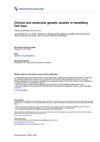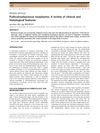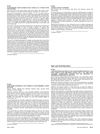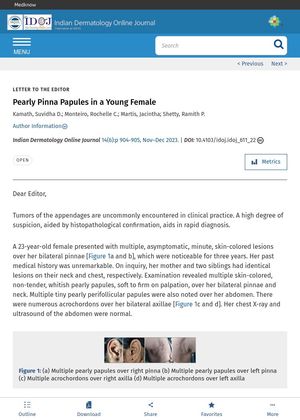TLDR The young woman has a benign, hereditary skin condition with no signs of a more serious syndrome.
A 23-year-old female presented with multiple asymptomatic, skin-colored lesions on her pinnae, neck, and abdomen, which were diagnosed as trichodiscomas based on clinical and histopathological features. Her family history revealed similar lesions in her mother and siblings. Trichodiscomas are benign tumors of the hair follicular discs and can be part of Birt-Hogg-Dube syndrome (BHD), a rare autosomal dominant disorder. The patient showed no systemic involvement, and due to financial constraints, genetic testing for BHD was not performed. She was counseled about the hereditary nature of the condition and the need for follow-up.
7 citations
,
September 2013 in “Familial cancer” Birt–Hogg–Dubé syndrome is a rare genetic condition causing skin lesions, lung cysts, and a higher chance of kidney cancer.
87 citations
,
August 1974 in “Journal of Investigative Dermatology”

Researchers found a genetic link for hereditary hair loss but need more analysis to identify the exact gene.
June 2023 in “Dermatopathology” A woman had a unique skin growth with hair follicle, oil glands, fat cells, spindle cells, and nerve fibers.
 July 2025 in “Clinical Dermatology Review”
July 2025 in “Clinical Dermatology Review” A rare family case of multiple benign hair follicle tumors was identified, highlighting the need to distinguish them from similar conditions.
 7 citations
,
March 2017 in “Journal of dermatology”
7 citations
,
March 2017 in “Journal of dermatology” The conclusion is that accurately identifying folliculosebaceous tumors requires understanding their clinical signs and microscopic features.
 16 citations
,
March 2005 in “Journal of The American Academy of Dermatology”
16 citations
,
March 2005 in “Journal of The American Academy of Dermatology” A boy with Sjogren-Larsson syndrome has skin and muscle symptoms due to a specific enzyme deficiency.




